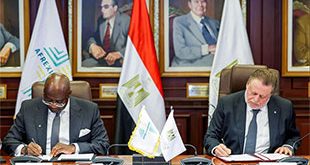
By Joshua Masinde
Essar had earlier paid US$ 3 million in licence fees to receive Uganda’s sixth mobile licence
Warid Uganda could have been sold by the end of the week if everything went according to plan. Essar Group, one of the largest Telecommunication industries in India is the intending buyer.
The Dhabi Group, which owns Warid, announced it had agreed to enter into exclusive discussions in relation to an investment by Essar Group into the telecommunications portfolio of the Dhabi Group’s African assets. A statement from Essar Telecom said the transaction will involve an equity infusion into these businesses as growth capital and will be the basis of a partnership to create a significant presence in Africa. The Dhabi group offers telecom services in African countries under the brand name Warid Telecom.
Essar is seeking to merge its telecoms licence in Uganda with the operations of Warid Telecom. The group had outlined a $200 million (approx. Shs 350 billion) investment when it bagged an operational licence for Uganda in June 2009, and said it was in exclusive talks to invest in the Dhabi group’s telecom operations in Africa.
“A large part of that will now be used for buying into Warid Uganda. It will give Essar immediate access to over 1.5 million users and a share in one of the fastest growing operators in the region,” a source close to the deal said.
Warid would be a good buy. It has been posting impressive subscriber growth since its launch in February 2008 as a fourth telecom operator in the country. It hit 1.2 million subscribers in April 2009.
Warid has shaken up the Uganda telecom scene since its entry. MTN, which is the dominant operator according to subscriber numbers, cut its tariffs by 14% prior to Warid’s launch. Even then, Warid entered the market with even lowewr rates. Through 36 customer centres, Prepaid starter kits were sold for Shs 3,000 and international calls were offered at the rate of a local call for a three months promotional period. Its recent promotion, the Pakalast, which enables callers to load only Shs 1000 (about US$ 0.5) and call for 24 hours, has been very popular. Over the same period Average Revenue per User has continued to slide. While MTN has an ARPU of US$ 12 per month (About Shs 25,000) in 2006, it has dropped to Shs 13,000 in April 2009. Zain, which had an ARPU of US$ 12 in 2006, had dropped to US$ 4 (about Shs 7,500) in 2009.
Difficult operating conditions in the country are likely to ensure that rates do not drop further. Most network operators depend on on diesel generator power for more than 40% of their sites, according to a new independent survey of the sector. As the number of antenna towers dotting the country’s landscape increases, the government is working on regulations to encourage infrastructure sharing among the networks.
Essar has significant interests in telecommunications services, including mobile telephony in an Indian joint venture with Vodafone, telecom tower infrastructure, telecom retail and IT/telecom enabled services.
On January 19, 2009, Warid Telecom won the Investor of the Year Award for investing over US$200m since it was licensed by the Uganda Investment Authority. But, with the current six operators, industry players have admitted tight competition, and increasing costs of operation, even as the telecommunications industry in Africa presents a bright future. Despite this, Uganda’s teledensity stands at around 30%, indicating a market with potential.
Essar had earlier paid US$ 3 million in license fees to receive Uganda’s sixth mobile licence in May 2009 and plans were in high gear for a launch of its services.
 The Independent Uganda: You get the Truth we Pay the Price
The Independent Uganda: You get the Truth we Pay the Price





